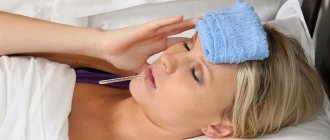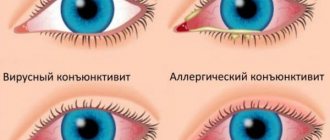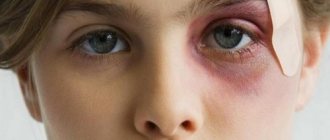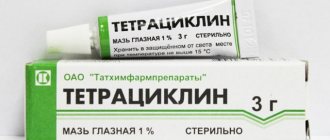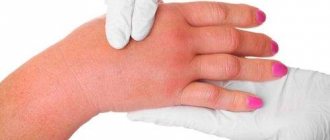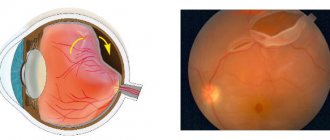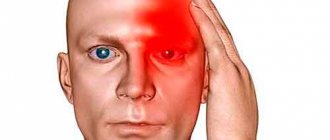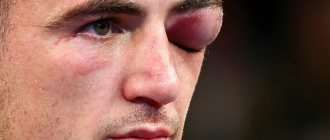What is a hematoma
Everyone knows that when hit, a bruise can form on the skin. But why does this happen? So, from a school biology course, many may remember that our skin includes three layers:
- Epidermis.
- Dermis.
- Hypodermis.
The first layer is the thickness of a paper sheet and does not contain blood vessels. The epidermis protects the body from the entry of harmful microorganisms and from mild mechanical effects, such as touch. The layer cannot be saved from the impact, so the next two layers suffer: the dermis with the hypodermis.
There are already capillaries inside the dermis, and it is their rupture that most often causes the appearance of a hematoma.
The force of the mechanical impact can be such that not only the second, but also the third layer suffers. The hypodermis consists of blood vessels, as well as soft adipose tissue, which is easily damaged and ruptured.
In simple terms, a bruise is an accumulation of liquid or coagulated blood under the skin , formed as a result of damage to blood vessels due to some kind of injury: impact, strong compression, and so on.
Causes and symptoms of dark circles under the eyes
Note! If we do not consider pathological processes, we can name the following reasons for the appearance of bruises under the eyes:
- excessive drinking and smoking;
- exposure to toxins;
- chronic lack of sleep for several weeks or more;
- improper use of cosmetics or use of low-quality cosmetics;
- hereditary predisposition and abnormal structure of blood vessels, as well as their close location to the surface of the skin.
People with sensitive skin are more likely to develop hematomas : noticeable bruises can form even after minor injuries, and such consequences take longer to resolve.
Stages of hematoma progression, why color changes
Regardless of where the bruise appeared, it will go away only after going through three stages, each of which is characterized by its own color palette: from red to yellowish. What is the reason for the change in the color of the hematoma over time? It is known that one of the functions of the circulatory system is the transport of oxygen. It is carried out by hemoglobin, which attaches an oxygen molecule to itself. It is hemoglobin that is associated with the change in color of the bruise, or rather with its disintegration. So, there are three stages of passing a bruise:
- First stage . Occurs immediately after mechanical damage to the skin. It is characterized by: swelling of the skin of the affected area, a purple color (turning into blue), which is caused by hemoglobin containing erythrocytes (red blood cells). After some time, hemoglobin is destroyed by leukocytes. The product of its decomposition is yellow-red, green pigments, which in combination give the damaged skin a blue tint.
- Second phase . Usually it begins after 2-3 days, a feature of the stage is the yellowing of the hematoma at the edges. At the second and third stages, all color changes are associated with the gradual removal of yellow-red and green pigment.
- Third stage . It comes after four to five days. During this period, it is typical that the affected skin turns green and the swelling decreases. The pigments completely disintegrate, the skin slowly begins to return to its normal color, and the hematoma goes away.
How long do bruises and swelling last after blepharoplasty?
Dynamics by day
1-2 days. Immediately after surgery, the eyelids swell. During the first hours, swelling increases and reaches a maximum by the end of 2 days. In some cases, hematomas spreading to the zygomatic region are possible.
3-4 days. The swelling begins to decrease. Blue bruises become yellow, brownish and greenish, fade and decrease in size.
5-7 days. The swelling subsides.
8-10 days. Small residual swelling and hematomas are possible. The patient can return to his normal lifestyle.
10-20 knocks. The face looks normal, but there is still excess fluid inside the tissues - this may manifest itself as slight asymmetry of the eyelids.
20-60 days. Complete healing and restoration of eyelid tissues after upper, lower and circular blepharoplasty: even internal residual swelling disappears completely.
This dynamics is relevant if you do not have urinary, vascular, or other pathologies that provoke swelling, and at the same time you follow all the recommendations of the plastic surgeon. In addition, the process is influenced by factors such as:
- age – the older you are, the more time your body needs to recover;
- the thickness of the subcutaneous fat - the thicker it is, the more water is retained in it and the slower the swelling goes down;
- skin thickness - the thinner it is, the more visible swelling is;
- technique and scope of the operation - the more surgical procedures, the longer and deeper the incisions for access, the more pronounced the swelling and the longer the rehabilitation.
Swelling of the upper eyelids lasts longer because there is less active blood supply in this area.
How to help you pass faster. Warm and cold heating pads
No matter how trivial it may sound, the use of cold, warm compresses . The first one should be used in the first hours of trauma. Cold will constrict blood vessels, reduce bleeding, and this method can generally prevent the appearance of a hematoma.
And you can only warm a bruise a day after it appears, otherwise the situation will only get worse. The good thing about this method is that heat will dilate the blood vessels, helping them to quickly carry away pigments - products of hemoglobin breakdown, and this, naturally, will speed up the resorption process. It is enough to apply heat three times a day for 20 minutes.
Symptoms
The first symptom of damage is pain. It all depends on the location of the injury. Unpleasant sensations can radiate to the head, face, nose. Often accompanied by headaches, discomfort, and burning. Heavy impacts can cause a concussion. In this case, the following symptoms occur: nausea, dizziness.
Rarely, partial or complete memory loss may occur.
It is worth considering that a blow to the bridge of the nose is always accompanied by bleeding. The injured person should know that blowing blood is prohibited. This can cause a lot of swelling. Doctors recommend using cotton or gauze swabs in such cases. They are placed in each nostril. It is important to understand that cotton fibers can remain on the mucous membrane and cause the formation of pus. Therefore, it is better to make tampons from bandage or gauze.
After the pain syndrome, redness appears. Change in skin color is a characteristic feature. It occurs within several hours after a blow or injury. After this, the color of the damaged skin gradually changes. Within 24 hours, the lesion can spread over a large area.
Heavy impacts lead to decreased visual acuity. Swelling causes difficulty closing the eyelids. It may be difficult for the affected person to close his eyes. This often causes pain.
How long does it take for a black eye to appear after a blow?
After a blow, the injured person initially experiences severe pain. Then swelling appears. It is important to consider that the extent of the damage initially causes only redness. Over the course of a day, the damaged area of skin begins to darken. The area of damage may double in size. This occurs due to internal bleeding.
In addition, additional symptoms may be observed: decreased visual acuity, headaches of various types. Swelling prevents you from fully opening or closing your eyes. Severe injuries can cause bleeding from the ears. In this case, you will need to urgently consult a doctor.
Drug treatment method
There are a huge number of different ointments that can help solve the problem of treating bruises. All their action is aimed at accelerating the movement of blood through the vessels of the hematoma site, liquefying it and resolving blood clots. So, ointments for treating bruises:
- Heparin is an inexpensive remedy against hemorrhoids and varicose veins, which is also used to combat hematomas, since the heparin inside the composition prevents blood from clotting and promotes the resorption of blood clots. Due to the anesthetic in the composition, the ointment reduces pain.
- Troxevasin is not an ointment, but a fast-acting gel for bruises, considered the most effective. Its main substance, troxerutin, thickens the vascular walls, which minimizes their permeability. Another property of troxerutin is a reduction in the number of blood platelets adhering to the capillary.
- Badyaga . It was previously used against rheumatism, but it is also useful in getting rid of hematomas. This traditional remedy includes silica, a rock from the skeletons of the Badyagov family, which improves blood circulation. Silica has such a structure that the preparation cannot be rubbed too hard, otherwise microtraumas will form. The properties of badyagi also include: stimulating cell regeneration and exfoliation of old skin, stopping inflammation. Badyaga should not be used by children or in areas of abrasions and mucous membranes (eyes, mouth, nostrils).
- Based on bee venom . Increases the speed of blood movement, the immunity of skin cells, as well as the temperature of the application site. Has anti-inflammatory and absorbable effects. All this turns the drug into an effective remedy against bruises. Ointments based on bee venom are: multi-complex apisatron (only for adults), virapine (allowed for children over one year old), consisting only of bee venom with Vaseline.
Remedies for bruises
It is worth noting! If a bruise occurs as a result of a blow (during a fight or while playing sports), you can get rid of it using special means.
They have a resolving, analgesic and regenerative effect. Among the most common pharmaceutical drugs of this type, the most commonly used are:
- Lyoton . This ointment restores damaged tissue and improves blood circulation. Moderate and severe bruises almost completely disappear when using this drug for a week with two or three applications during the day.
- Troxevasin. The main purpose of such a remedy is to normalize the condition of the tissues of the walls of blood vessels with varicose veins. But since the ointment helps eliminate swelling and has a resolving effect, it is often used as an additional remedy to eliminate bruises. In this capacity, the drug is used in the morning and evening as needed (until the bruise completely disappears).
- Bruise-off . A common remedy among athletes involved in traumatic sports. The basis of this drug is leech extract, which eliminates inflammatory processes, improves lymph and blood circulation and activates tissue regeneration mechanisms. You should start using the ointment as early as possible - in this case, you can guarantee the disappearance of bruises already on the fourth day if you use the drug up to five times a day.
- Badyaga. Another product based on natural ingredients, which is applied three times a day for bruises. The drug stimulates blood circulation and has a moderate antibacterial effect.
- Heparin ointment. The most effective remedy for bruises of any severity. On the first day after injury, the product is applied to the damaged areas every hour. As soon as the bruise begins to go away, the ointment can be used every two to three hours.
How to quickly reduce and remove swelling?
Next, we’ll talk about how to quickly remove swelling from the nose and get rid of swelling on the face if it does not go away for a long time.
General Tips
There are a number of recommendations on what to do to make swelling go away faster after surgery:
- The best way to quickly relieve swelling is cold compresses. For this, ice cubes wrapped in cloth and applied to the swollen paranasal areas may be suitable.
- Hot baths, saunas and baths are strictly contraindicated. Such procedures increase blood flow to swollen tissues, thereby aggravating the process. In the first stages after surgery, it is recommended to sleep half-sitting, on a high pillow or with the head of the bed raised.
- Avoid high physical activity, especially associated with prolonged tilting of the body or head. But you shouldn’t give up movement completely. Light walks and exercise in the second to third week after surgery will have a beneficial effect on swelling reduction and recovery.
- The diet is moderate, you should avoid heavy consumption of spicy, salty foods.
During the rehabilitation period, it is better to completely abstain from alcohol and nicotine.
By reading special publications on our website, you can also find out the following information:
- What are the stages of rhinoplasty and what are the possible consequences?
- What techniques are used for plastic surgery of the wings, tip and other parts of the nose?
- How to fix a nose with a “potato” and how is surgery performed on the tip of the nose?
- What is non-surgical rhinoplasty and how is the procedure performed using threads?
- What can be considered a failed rhinoplasty?
Preparations and ointments
- As a rule, the temperature remains within 38 degrees for several days after surgery. Patients are prescribed antibiotics. Painkillers are used to relieve pain.
- When obvious signs of bleeding disappear, the doctor may prescribe decongestant ointments and gels, such as troxevasic ointment, Traumeel, Bodyaga.
- Among the drugs taken orally, Bromelain, an extract from pineapple that relieves inflammation and swelling, has proven itself well.
- “Dimexide” is used as compresses by diluting the preparation with water.
- To help the residual swelling of the tip of the nose go away faster, use “Diprospan” as an injection into the area of swelling. The procedure is not so simple and quite painful, so it must be prescribed and performed by the doctor himself.
- Also, throughout the entire rehabilitation period, it is recommended to use sprays and drops with sea water Aqualor, Aquamaris. They rinse the nose from accumulated secretions and help the healing process of the intranasal cavities.
Folk remedies
The use of folk remedies is no less effective in relieving swelling.
- The first place on the list is taken by a cut aloe leaf, which the patient applies to the areas of swelling.
- Compresses made from a decoction of chamomile and string help well.
- You can brew and drink dry arnica tea.
Ointment "Lyoton"
This ointment perfectly relieves swelling and helps speed up the process of restoration of damaged tissue. How long does it take for a black eye to go away if Lyoton ointment is used? For moderate to severe injuries, bruises disappear within seven days.
However, the product should be applied to the damaged area at least 2-3 times throughout the day. The ointment should be used until the hematoma disappears completely. It should be noted that with prolonged use, dry skin, itching and flaking may occur.
If there is an open wound, the product is contraindicated for use. The use of Lyoton is prohibited if the patient has problems with blood clotting or pathologies that cause bleeding. For women who are pregnant and at risk of miscarriage, the ointment is not recommended for use. But during lactation it is not prohibited to use the product.
How to remove swelling from a bruise immediately after an injury?
First aid for swelling of a bruised area includes the following step-by-step measures:
You need to quickly remove rings, watches, bracelets from an injured hand, and if your foot is injured, take off your shoes. When swelling appears, this will have to be done with difficulty, increasing the pain. Place the limb and joint in an elevated position and secure with a soft bandage to limit movements. Apply cold to the site of the bruise immediately after the injury, which will reduce the diameter of the blood vessels and delay the flow of blood. Use pieces of ice, cold lotions, and a heating pad. On the first day, the procedure is repeated 3-4 times for 5-7 minutes at intervals of half an hour (avoid frostbite!). “Draw” an iodine grid on the swollen skin. After 2 hours, apply a compress of ointment or gel preparations. If the pain in the bruised area does not disappear, then take Pentalgin and consult a doctor.

